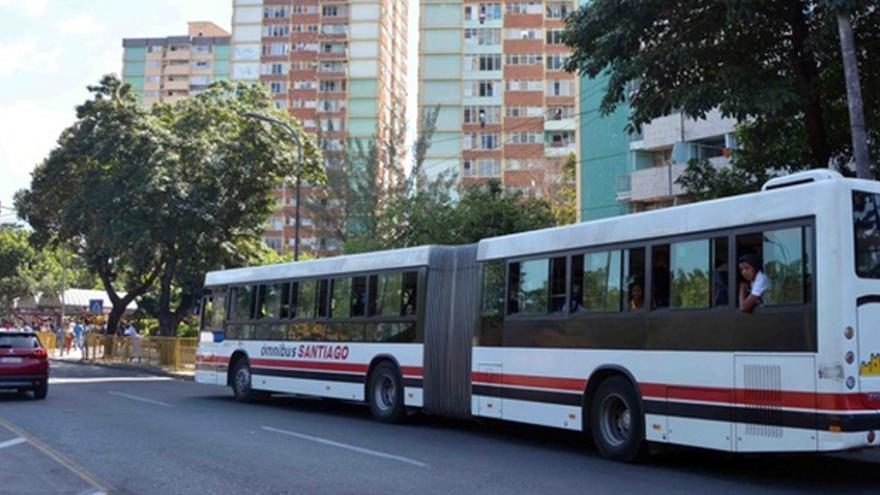
![]() 14ymedio, Havana, 18 December 2023 — Only half of the public transport vehicles operate in Santiago de Cuba, mainly because of lack of fuel, according to the official newspaper Sierra Maestra, as reported by Yariannis Carrión, a specialist of the Provincial Transport Company.
14ymedio, Havana, 18 December 2023 — Only half of the public transport vehicles operate in Santiago de Cuba, mainly because of lack of fuel, according to the official newspaper Sierra Maestra, as reported by Yariannis Carrión, a specialist of the Provincial Transport Company.
The situation, however, is not recent. Last June, the same newspaper reported that only half of the vehicles were providing service due to a lack of spare parts, resources and fuel. The authorities, for their part, only succeed in putting pressure on state companies to use their own buses for their workers to transport passengers.
The article also explains that in December only five buses of the main routes are in operation – half of those available in the province – and of the Diana buses, of Chinese manufacture and assembled in Cuba, barely 18 out of a total of 36 are operational.
The local government also asked the inspectors – previously known as “yellows” and now called “blues” – to contribute to flagging down cars to pick up riders
The local government also asked the inspectors – previously known as “yellows” and now called “blues” – to contribute to flagging down the cars of state companies to collaborate in the transport of people. However, the authorities have pointed out that the drivers, on many occasions, ignore the signal to stop or lie about their final destination.
“All companies, whether Transport or not, have rented vehicles, and it’s expected that by 2024 this figure will increase and the fuel situation will improve,” Carrión added, although he did not offer any explanation about how much the costs of this type of transport have risen.
Traditionally in Santiago de Cuba, motorcycles have been a palliative to the critical situation of urban transport. However, the cost of spare parts and gasoline on the black market have raised the price of tickets to 100 pesos in short sections. For slightly longer distances, such as the 3.7 miles that separate Ferreiro Park from the town of El Caney, the price is around 300 pesos, always up to the driver.
On the other hand, the well-known pisicorres (old cars adapted to transport passengers), have prices established at 20 pesos, but the drivers try to circumvent the limit, increasing the rate to 50 pesos if there are no inspectors in sight.
This September, the local newspaper Escambray acknowledged that both rural and interurban routes were paralyzed in Sancti Spíritus
In other provinces the situation is similar. This September, the local newspaper Escambray acknowledged that both rural and interurban routes were paralyzed in Sancti Spíritus, and that there were hardly any buses in the provincial capital.
There have also been readjustments in Holguín. Speaking to the official newspaper Ahora!, Wilmer García Ramírez, director of the Transport Company in the province, said that the 21 routes that exist in the city remain operational, “but with fewer cars,” which reduces the frequency during the day.
Last February, the Minister of Transport, Eduardo Rodríguez Dávila, announced on State TV’s Round Table program that the Island was facing one of the worst moments of public transport in recent years.
Rodríguez Dávila explained that the Government does not have foreign currency to repair the means of transport: “It takes between 40 and 45 million dollars to maintain passenger transport services, not counting the money needed for new investments, and those figures cannot be guaranteed.”
In addition, the official admitted that to the difficulties in obtaining gasoline and oil is added the ruinous state of the roads throughout the country, which contributes to the rapid deterioration of the vehicles.
Translated by Regina Anavy
_______________
COLLABORATE WITH OUR WORK: The 14ymedio team is committed to practicing serious journalism that reflects Cuba’s reality in all its depth. Thank you for joining us on this long journey. We invite you to continue supporting us by becoming a member of 14ymedio now. Together we can continue transforming journalism in Cuba.
